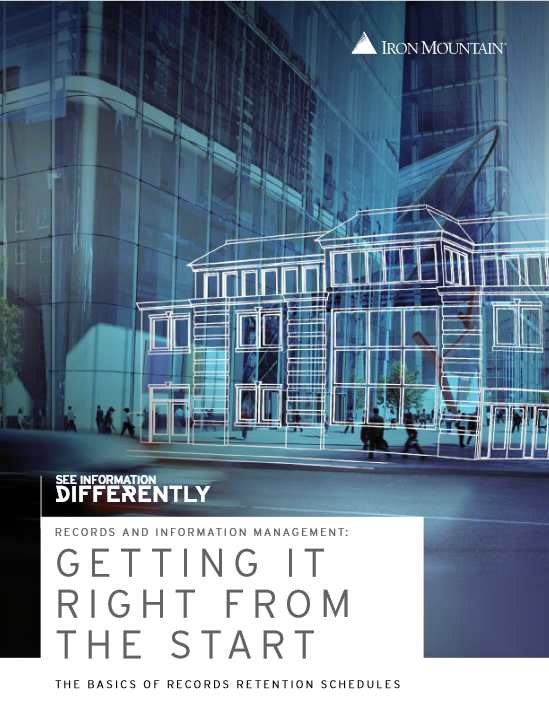Elevate the power of your work
Get a FREE consultation today!
A records retention schedule is a policy document that defines an organization's legal and compliance recordkeeping requirements.

A records retention schedule is the cornerstone of an effective records management program. It is a policy document that defines an organization's legal and compliance recordkeeping requirements. A company implements a records retention schedule in order to ensure that its records are kept as long as legally and operationally required and that obsolete records are disposed of in a systematic and controlled manner. The records retention schedule is intended to ensure that employees adhere to approved recordkeeping requirements, and that they do so consistently.
Records retention schedules serve as a company's legal authority to retain and purge records and, therefore, hold great importance for a company. The records retention schedule captures all of the types of records created and used by a company in the course of its business and indicates how long these records are required to be retained. A retention schedule needs to be developed and applied in a systematic manner, as part of a company's corporate- wide records management strategy. Both development and implementation of a retention schedule are important elements in establishing a "good faith" effort and ensuring a sound records management program.
As the volume of retained business records expands, so do the associated risks of not having a retention schedule. Establishing how long to retain records requires the development and implementation of a credible records retention policy. Irregularity or inconsistency in a company's records program or the absence of a credible records management program can splinter outsiders' assumptions of good faith. Absent a viable reason, keeping records for longer or shorter times than guidelines dictate exposes a company to unnecessary risk.
The more information a business retains, the greater the burden of identifying and locating records when needed for reference purposes and legal compliance.Without a records management program with indexing capabilities, the effort of locating required documents can be immense. Risk exists if a company is not able to locate all seemingly relevant records and unintentionally withholds required documents.
Through the successful development and implementation of a records retention schedule, businesses can realize the following benefits:
A retention schedule organizes a company's records in categories called record classes—groupings of records that support similar business processes and that have related legal and operational retention requirements. Creating record classes allows a company to apply consistent retention practices to similar types of records. Each record class consists of a description of the process the records support and examples of the types of records that fall under the record class. A retention period or rule is associated with each record class. A retention period may be stated in terms of months or years, or may be expressed as contingent upon the occurrence of an event such as the termination of a contract or conclusion of a project. The retention schedule is accompanied by comprehensive legal research that documents current legal recordkeeping requirements and considerations.
Overall, organizations are advised to drive towards consistency in every aspect of retention management. Other important considerations to make when developing a records retention schedule are:
A company should implement a universal retention schedule for all business units. The retention schedule should be structured around a classification scheme that categorizes "like" records into broader groupings to facilitate consistency and manageability.
The retention periods within the retention schedule should reflect the longer of the legal and operational value of the records. The justification for the retention periods, legal or operational, should be documented. In the case of a legal authority, the legal citations should be maintained on file.
Users should be discouraged from calculation of the specific destruction dates for individual records due to the likelihood of inconsistency. Rather, a proper records management system can calculate the actual retention dates by having users assign a standard records classification code and having a records management systems calculate the destruction date using the combination of the retention schedule within the system and the creation date of the records.
A retention schedule and policy should be viewed as dynamic.The retention schedule should be reviewed periodically (approximately every 18 to 24 months) to determine the impact of legal changes upon retention periods. Also, the records classification scheme should be updated to reflect changes in the company's business and hence their records.
A retention schedule needs to be inculcated into a company as a way of life. It should be packaged, rolled out and made accessible as part of a company's common infrastructure. The parameters of the retention schedule as well as the records management program should be communicated frequently and thoroughly within the organization.
Get a FREE consultation today!


